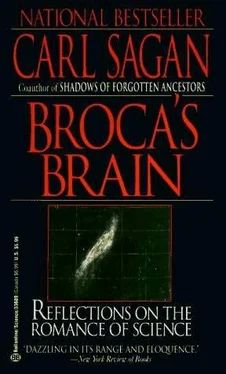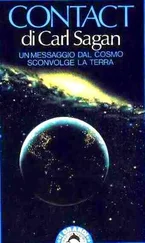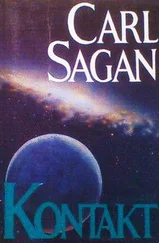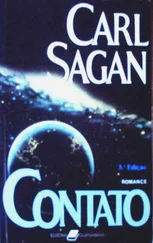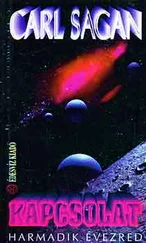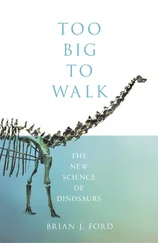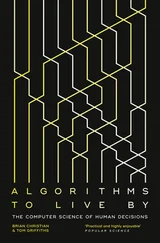Carl Sagan - Broca's Brain - The Romance of Science
Здесь есть возможность читать онлайн «Carl Sagan - Broca's Brain - The Romance of Science» весь текст электронной книги совершенно бесплатно (целиком полную версию без сокращений). В некоторых случаях можно слушать аудио, скачать через торрент в формате fb2 и присутствует краткое содержание. Жанр: Физика, на английском языке. Описание произведения, (предисловие) а так же отзывы посетителей доступны на портале библиотеки ЛибКат.
- Название:Broca's Brain: The Romance of Science
- Автор:
- Жанр:
- Год:неизвестен
- ISBN:нет данных
- Рейтинг книги:3 / 5. Голосов: 1
-
Избранное:Добавить в избранное
- Отзывы:
-
Ваша оценка:
- 60
- 1
- 2
- 3
- 4
- 5
Broca's Brain: The Romance of Science: краткое содержание, описание и аннотация
Предлагаем к чтению аннотацию, описание, краткое содержание или предисловие (зависит от того, что написал сам автор книги «Broca's Brain: The Romance of Science»). Если вы не нашли необходимую информацию о книге — напишите в комментариях, мы постараемся отыскать её.
Broca's Brain: The Romance of Science — читать онлайн бесплатно полную книгу (весь текст) целиком
Ниже представлен текст книги, разбитый по страницам. Система сохранения места последней прочитанной страницы, позволяет с удобством читать онлайн бесплатно книгу «Broca's Brain: The Romance of Science», без необходимости каждый раз заново искать на чём Вы остановились. Поставьте закладку, и сможете в любой момент перейти на страницу, на которой закончили чтение.
Интервал:
Закладка:
One numerical coincidence of this sort, which is of deep significance, was well known to the Babylonians, contemporaries of the ancient Hebrews. It is called the Saros. It is the period between two successive similar cycles of eclipses. In a solar eclipse the Moon, which appears from the Earth just as large (1/2°) as the Sun, must pass in front of it. For a lunar eclipse, the Earth’s shadow in space must intercept the Moon. For either kind of eclipse to occur, the Moon must, first of all, be either new or full-so that the Earth, the Moon and the Sun are in a straight line. Therefore the synodic month is obviously involved in the periodicity of eclipses. But for an eclipse to occur, the Moon must also be near one of the nodes of its orbit. Therefore the nodical month is involved. It turns out that 233 synodic months is equal to 241.9989 (or very close to 242) nodical months. This is the equivalent of a little over eighteen years and ten or eleven days (depending on the number of intervening leap days), and comprises the Saros. Coincidence?
Similar numerical coincidences are in fact common throughout the solar system. The ratio of spin period to orbital period on Mercury is 3 to 2. Venus manages to turn the same face to the Earth at its closest approach on each of its revolutions around the Sun. A particle in the gap between the two principal rings of Saturn, called the Cassini Division, would orbit Saturn in a period just half that of Mimas, its second satellite. Likewise, in the asteroid belt there are empty regions, known as the Kirkwood Gaps, which correspond to nonexistent asteroids with periods half that of Jupiter, one-third, two-fifths, three-fifths, and so on.
None of these numerical coincidences proves the existence of God-or if it does, the argument is subtle, because these effects are due to resonances. For example, an asteroid that strays into one of the Kirkwood Gaps experiences a periodic gravitational pumping by Jupiter. Every two times around the Sun for the asteroid, Jupiter makes exactly one circuit. There it is, tugging away at the same point in the asteroid’s orbit every revolution. Soon the asteroid is persuaded to vacate the gap. Such incommensurable ratios of whole numbers are a general consequence of gravitational resonance in the solar system. It is a kind of perturbational natural selection. Given enough time-and time is what the solar system has a great deal of-such resonances will arise inevitably.
That the general result of planetary perturbations is stable resonances and not catastrophic collisions was first shown from Newtonian gravitational theory by Pierre Simon, Marquis de Laplace, who described the solar system as “a great pendulum of eternity, which beats ages as a pendulum beats seconds.” Now, the elegance and simplicity of Newtonian gravitation might be used as an argument for the existence of God. We could imagine universes with other gravitational laws and much more chaotic planetary interactions. But in many of those universes we would not have evolved-precisely because of the chaos. Such gravitational resonances do not prove the existence of God, but if he does exist, they show, in the words of Einstein, that, while he may be subtle, he is not malicious.
BLOOM CONTINUES his work. He has, for example, demonstrated the preordination of the United States of America by the prominence of the number 13 in major league baseball scores on July 4, 1976. He has accepted my challenge and made an interesting attempt to derive some of Bosnian history from numerology-at least the assassination of Archduke Ferdinand at Sarajevo, the event that precipitated World War I. One of his arguments involves the date on which Sir Arthur Stanley Eddington presented a talk on his mystical number 136 at Cornell University, where I teach. And he has even performed some numerical manipulations using my birth date to demonstrate that I also am part of the cosmic plan. These and similar cases convince me that Bloom can prove anything.
Norman Bloom is, in fact, a kind of genius. If enough independent phenomena are studied and correlations sought, some will of course be found. If we know only the coincidences and not the enormous effort and many unsuccessful trials that preceded their discovery, we might believe that an important finding has been made. Actually, it is only what statisticians call “the fallacy of the enumeration of favorable circumstances.” But to find as many coincidences as Norman Bloom has requires great skill and dedication. It is in a way a forlorn and perhaps even hopeless objective-to demonstrate the existence of God by numerical coincidences to an uninterested, to say nothing of a mathematically unenlightened public. It is easy to imagine the contributions Bloom’s talents might have made in another field. But there is something a little glorious, I find, in his fierce dedication and very considerable arithmetic intuition. It is a combination of talents which is, one might almost say, God-given.
CHAPTER 9

The poet’s eye, in a fine frenzy rolling,
Doth glance from heaven to earth, from
earth to heaven;
And as imagination bodies forth
The forms of things unknown, the poet’s pen
Turns them to shapes, and gives to airy nothing
A local habitation and a name.
WILLIAM SHAKESPEARE,
A Midsummer Night’s Dream , Act V, Scene 1
BY THE TIME I was ten I had decided-in almost total ignorance of the difficulty of the problem-that the universe was full up. There were too many places for this to be the only inhabited planet. And judging from the variety of life on Earth (trees looked pretty different from most of my friends), I figured life elsewhere would look very strange. I tried hard to imagine what that life would be like, but despite my best efforts I always produced a kind of terrestrial chimaera, a blend of existing plants and animals.
About this time a friend introduced me to the Mars novels of Edgar Rice Burroughs. I had not thought much about Mars before, but here, presented before me in the adventures of John Carter, was an inhabited extraterrestrial world breathtakingly fleshed out: ancient sea bottoms, great canal-pumping stations and a variety of beings, some of them exotic. There were, for example, the eight-legged beasts of burden, the thoats.
These novels were exhilarating to read. At first. Then slowly doubts began to gnaw. The plot surprise in the first John Carter novel I read hinged on him forgetting that the year is longer on Mars than on Earth. But it seemed to me that if you go to another planet, one of the first things you check into is the length of the day and the year. (Incidentally, I can recall no mention by Carter of the remarkable fact that the Martian day is almost as long as the terrestrial day. It was as if he expected the familiar features of his home planet somewhere else.) Then there were incidental remarks made which were at first stunning but on sober reflection disappointing. For example, Burroughs casually comments that on Mars there are two more primary colors than on Earth. I spent many long minutes with my eyes tightly closed, fiercely concentrating on a new primary color. But it would always be a murky brown or a plum. How could there be another primary color on Mars, much less two? What was a primary color? Was it something to do with physics or something to do with physiology? I decided that Burroughs might not have known what he was talking about, but he certainly made his readers think. And in those many chapters where there was not much to think about, there were satisfyingly malignant enemies and rousing swordsmanship-more than enough to maintain the interest of a citybound ten-year-old in a Brooklyn summer.
Читать дальшеИнтервал:
Закладка:
Похожие книги на «Broca's Brain: The Romance of Science»
Представляем Вашему вниманию похожие книги на «Broca's Brain: The Romance of Science» списком для выбора. Мы отобрали схожую по названию и смыслу литературу в надежде предоставить читателям больше вариантов отыскать новые, интересные, ещё непрочитанные произведения.
Обсуждение, отзывы о книге «Broca's Brain: The Romance of Science» и просто собственные мнения читателей. Оставьте ваши комментарии, напишите, что Вы думаете о произведении, его смысле или главных героях. Укажите что конкретно понравилось, а что нет, и почему Вы так считаете.
